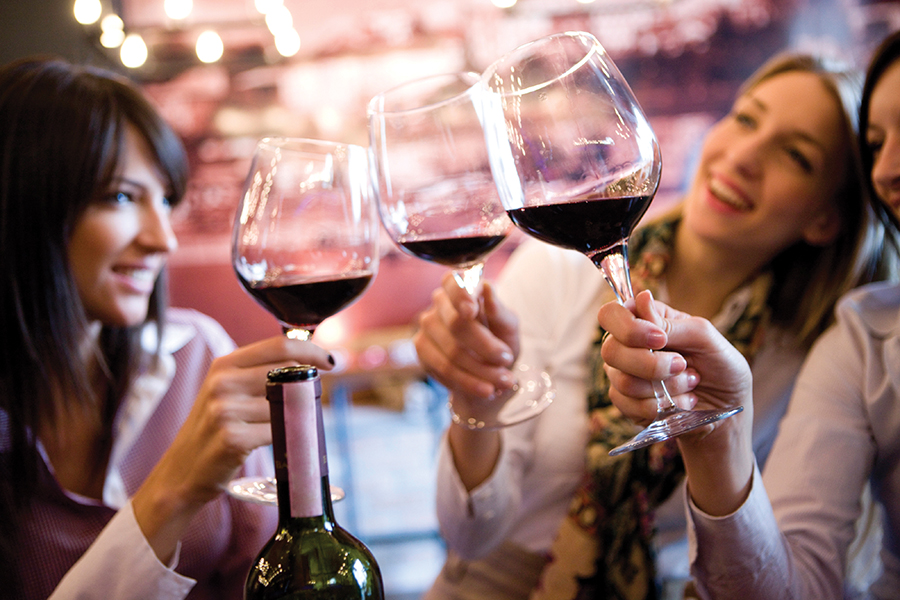By Matthew DeBord
HQ 79 | AUTUMN 2012
What people often talk about when they talk about wine is how to find bargains. The Holy Grail – and remember, that artifact was a cup that wine was drunk from – of wine drinkers everywhere is that great, inexpensive bottle. But obviously there’s more to wine than bargain hunting, rewarding though it may be. There’s the world of wines that are worth a splurge now and then.
So here’s what we’re recommending for this issue’s column: Indulge yourself! Believe me, it is well worth it from time to time. And really, if you think about it, an expensive bottle of wine, its cost spread out over a year, suddenly doesn’t seem too expensive. $200 is less than $20 per month. Even – gasp! – a $1,000 bottle pencils out to less than $100 per month. Some people are happily paying that much and more for their cell phone plan. And how much fun is that?
The great thing about wine these days is that you can indulge yourself for a lot less than you might have two decades ago, when indulgence-worthy wines were mostly from France and generally carried a hefty price tag. There are many, many good and even great wines out there for less than $100. And when you work your way past that psychologically significant barrier, you can really experience some fireworks.
Wines of $100-plus can be a gateway drug, putting you on a quest for ever-more expensive bottles. But they can just as easily give you a glimpse of the qualities your everyday $15 quaffer doesn’t have. And there you can leave it. The vineyards of indulgence only need to be visited once or twice a year.
I’ve listed some of my favorite indulgence wines. They aren’t always the most famous or most expensive. But when I’m ready to indulge, these are the wines I look for, in no particular order.
Ridge Monte Bello
Ridge Monte Bello is a true Cabernet enthusiast’s wine. It’s a blend, but most of what goes in the bottle is Cab. This isn’t a big, full-bore California Cab in the classic Napa sense. Rather, it’s more like a French Bordeaux, although not as stingy on the fruit flavors. It’s just as well structured, however. Monte Bello ages well and shows just how sophisticated California Cabs can be. It sells from around $75-$100, depending on the quality of the vintage.
Vieux Télégraphe Chateauneuf du Pape
If there were an indulgence wine that could also be an everyday wine, this would be it. Okay, at $75, maybe not every day. The beauty of Vieux Telly is that it’s a true premium wine but, being from the Rhône region of France, it’s unpretentious. Complex and rewarding almost immediately, it still benefits greatly from a little aging. Flavors can be sort of unusual for an American palate – grilled meat, smoke and even a bit of stone are typical. But that all makes this superb wine, long imported from France by the heroic Kermit Lynch of Berkeley, Calif., that much more exciting.
Flora Springs Trilogy
Flora Springs Trilogy is my favorite California wine from my favorite Napa winery. If I had to take one wine with me to a deserted island, this would be it. If I had to drink
only one wine until my time on this earth was up, I’d choose Flora Springs Trilogy. In production for more than two decades, Trilogy gets its name from being a blend of Cab, Merlot and a rustic, offbeat grape called Malbec. It can usually be found for about $60, making it one of the more affordable indulgence wines.
Phelps Insignia
One of the truly great wines of California, Phelps Insignia has surpassed 30 vintages and seen most of them rated very highly by wine critics. Almost all Cabernet – and all worth it. And that’s a good thing, as a bottle will set you back anywhere from $150 to $200. With Cos d’Estournel (see below), Insignia is an excellent candidate for aging, if you want to “lay down” a few bottles for future enjoyment. For a number of years, this has been my go-to gift wine for anyone looking to give a gift that rewards right away – or keeps on giving.
Chateau Cos d’Estournel (2008)
Cos is what’s now referred to in the wine world as a “Super Second.” In the hierarchy of the wines of Bordeaux, France, it sits just below the lordly First Growths, the five wineries that define fine wine worldwide. Second used to be, well, second-best. But in the past decade or so, as the firsts have gotten prohibitively expensive, the seconds – particularly the best of the lot, the Super Seconds – have come into their own. Cos d’Estournel is more plush than the typical Cab-dominated Bordeaux red from the Left Bank of the Gironde River, which runs through the region (it contains a healthy percentage of softening Merlot). In “off” vintages, this is one of the best wine bargains around. But in a great vintage, such as 2008, the price rises reliably above $100.
Kistler Chardonnay
Kistler is America’s greatest Chardonnay – and the only white wine on my list. Kistler is a small, family-owned winery in Sonoma, which for my money is some of the best Chardonnay country in the U.S. (Napa is right next door.) Kistler produces several different Chard bottlings, each with its own “vineyard designation.” They all price above $50, and the really sought-after ones go for $100-plus. The cool thing about these Chards is that they split the difference between the rich, full California style and the more austere, cerebral style from Burgundy, France. The deliciousness factor is very, very high. So is the connoisseur factor. Kistler has become a quiet “trophy wine,” appreciated by legitimate wine enthusiasts who aren’t focused on tracking down the most famous “great” wines. If you have any doubts about Chardonnay, a bottle of Kistler will change your mind in a hurry. But you can also wait around and let a bottle age. Unlike many U.S. Chards, Kistler gets better as it gets older.





